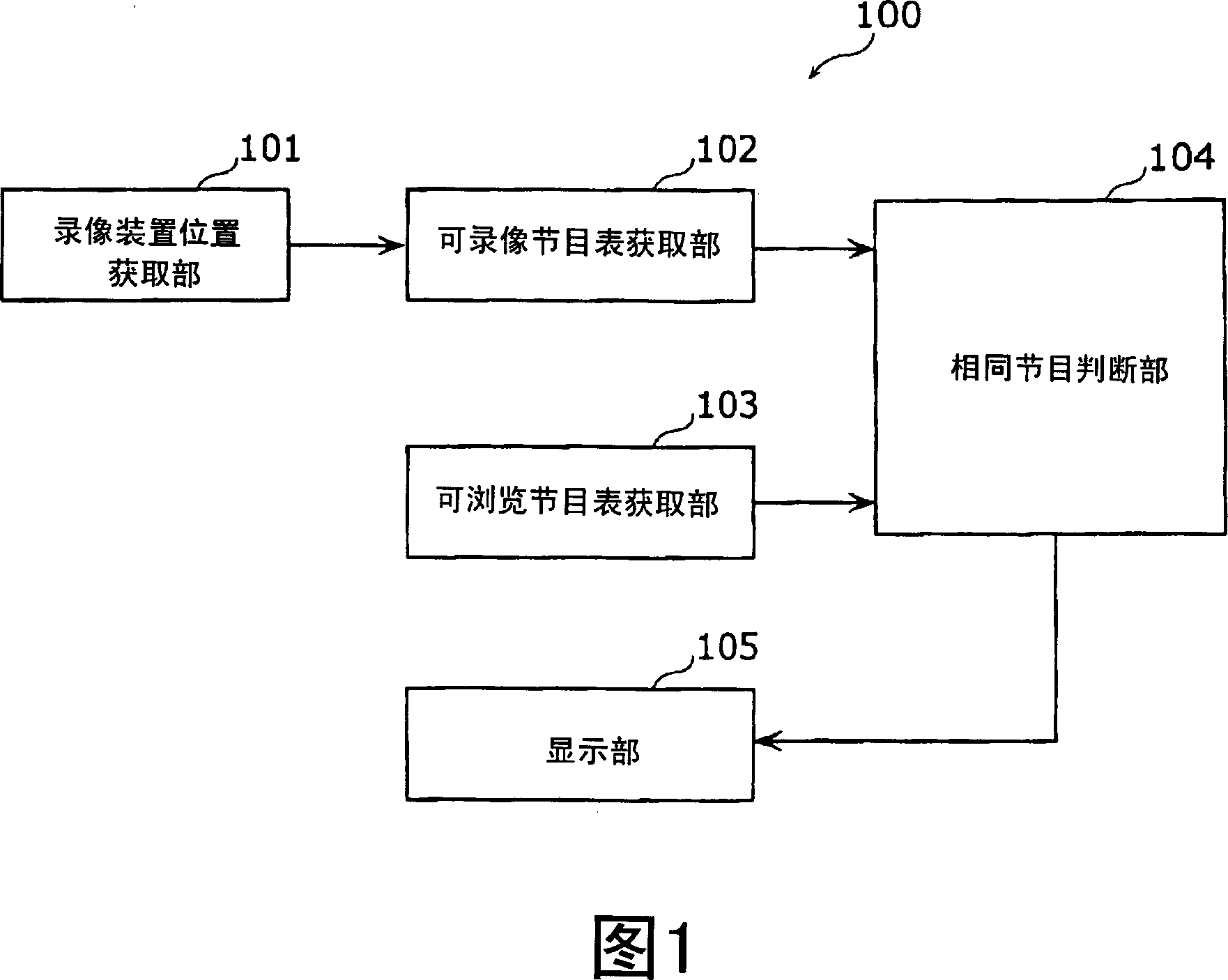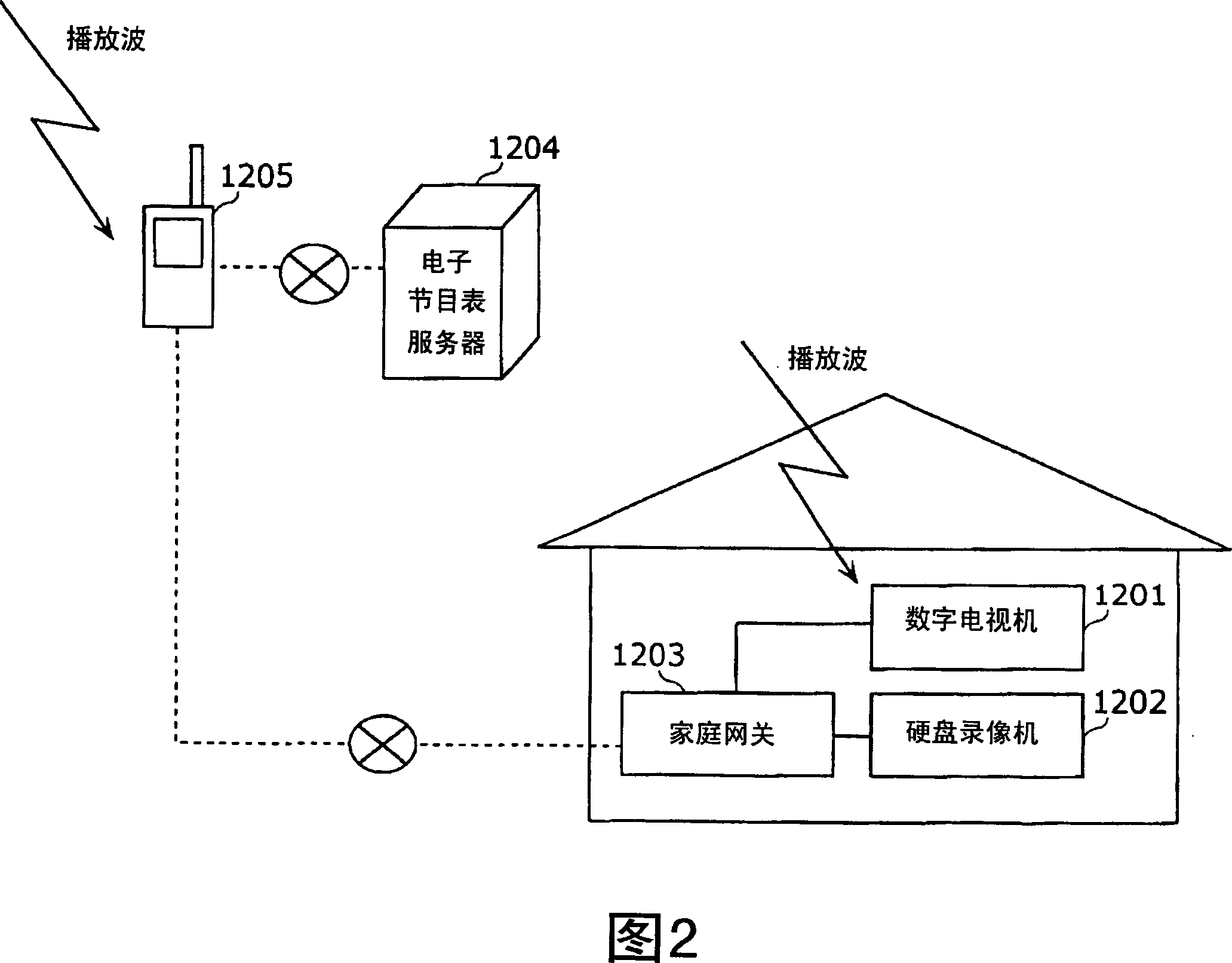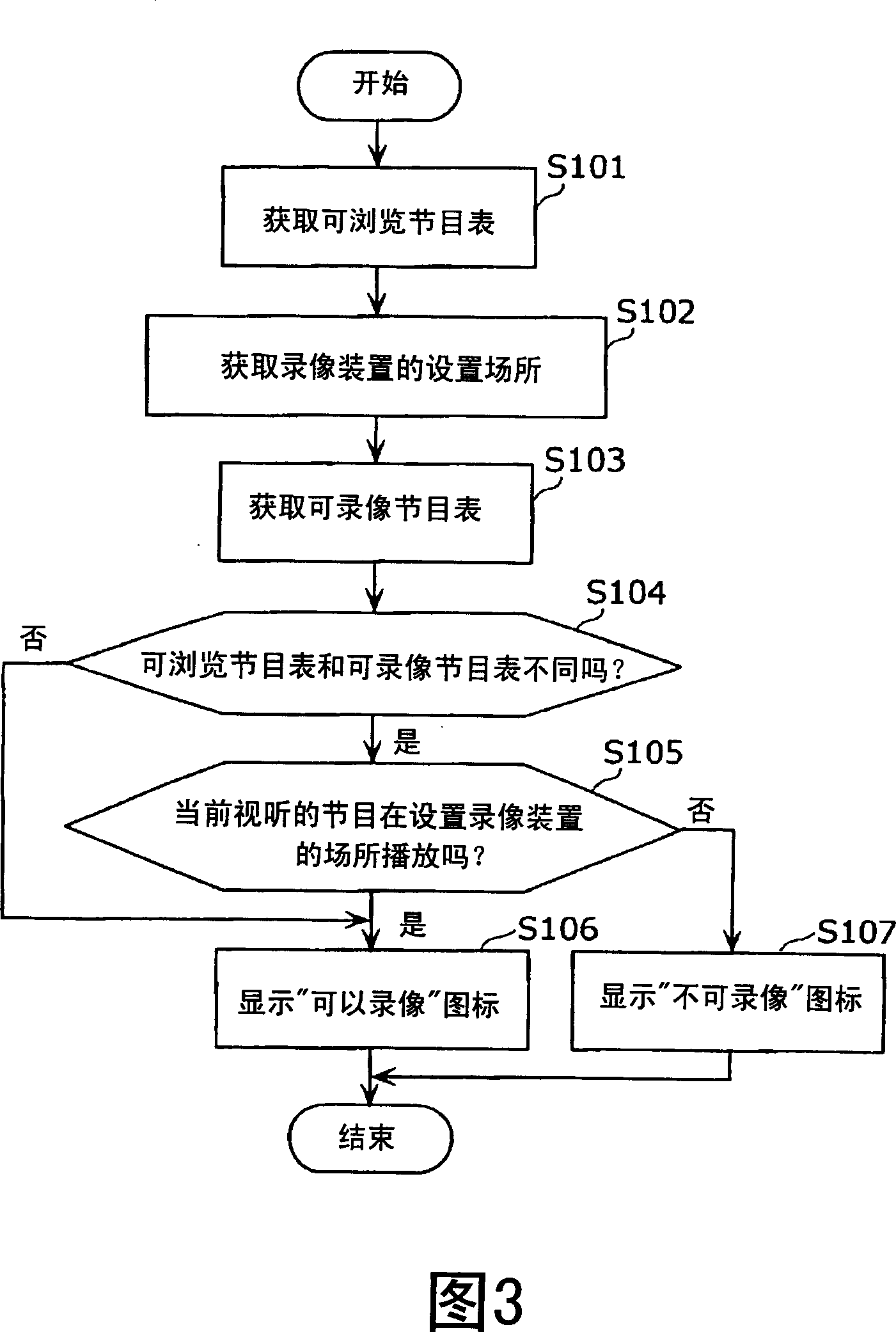Watching support apparatus and program recording system
A technology for supporting devices and video recording systems, which is applied to parts of TV systems, two-way working systems, TVs, etc. It can solve the problems of not being able to record on video devices, time-consuming, and not being able to record programs, and achieve high practical value.
- Summary
- Abstract
- Description
- Claims
- Application Information
AI Technical Summary
Problems solved by technology
Method used
Image
Examples
Embodiment approach 1
[0093] FIG. 1 is a block diagram showing the configuration of an audiovisual support device according to Embodiment 1 of the present invention.
[0094] The viewing support device 100 is a device that supports viewing of programs by users, and includes a recording device position acquisition unit 101 , a recordable program list acquisition unit 102 , a browsable program list acquisition unit 103 , an identical program determination unit 104 , and a display unit 105 .
[0095] The recording device location acquiring unit 101 acquires the installation location of the recording device (hereinafter referred to as the recording device installation location). The recordable program list acquisition unit 102 acquires a program list (hereinafter referred to as a recordable program list) of broadcast contents (programs) at the location where the recording device is installed. The browsable program list acquisition unit 103 acquires a program list of broadcast content at the current loc...
Embodiment approach 2
[0110] Modifications of Embodiment 1 will be described. In Embodiment 1, a case has been described in which a mobile phone has a built-in circuit for receiving digital broadcasts, and the digital broadcasts are received and viewed using the mobile phone. In this embodiment, the mobile phone has a remote control function for operating channels and screens of the digital television.
[0111] 5 is a block diagram showing the configuration of an audiovisual support device according to Embodiment 2 of the present invention. In addition, the same code|symbol is attached|subjected to the same part as Embodiment 1, and detailed description is abbreviate|omitted.
[0112] The viewing support device 200 has a program list display unit 203 instead of the display unit 105 in the configuration of the first embodiment. Furthermore, the operations of the recording device position acquisition unit 201 and the identical program determination unit 202 are different from those of the first emb...
Embodiment approach 3
[0124] In Embodiments 1 and 2 above, the same program judging units 104 and 202 compare the browsable program table and the recordable program table to judge the same program, thereby judging whether the currently browsing program can be recorded at a remote location. However, the obtained display content of the browseable program list and the recordable program list may not be the same. Abbreviations may also be used depending on the size of the frame on which program content is provided. For example, there are cases where an abbreviated term such as "Professional Baseball N" is used in a program titled "Nippon Professional Baseball News Bulletin". However, the duration of the programs is often the same. Therefore, in the present embodiment, a case will be described in which the identity of programs is judged based on the broadcast time information of the programs and the text information of the program information.
[0125] Fig. 12 is a block diagram showing a specific con...
PUM
 Login to View More
Login to View More Abstract
Description
Claims
Application Information
 Login to View More
Login to View More - R&D
- Intellectual Property
- Life Sciences
- Materials
- Tech Scout
- Unparalleled Data Quality
- Higher Quality Content
- 60% Fewer Hallucinations
Browse by: Latest US Patents, China's latest patents, Technical Efficacy Thesaurus, Application Domain, Technology Topic, Popular Technical Reports.
© 2025 PatSnap. All rights reserved.Legal|Privacy policy|Modern Slavery Act Transparency Statement|Sitemap|About US| Contact US: help@patsnap.com



